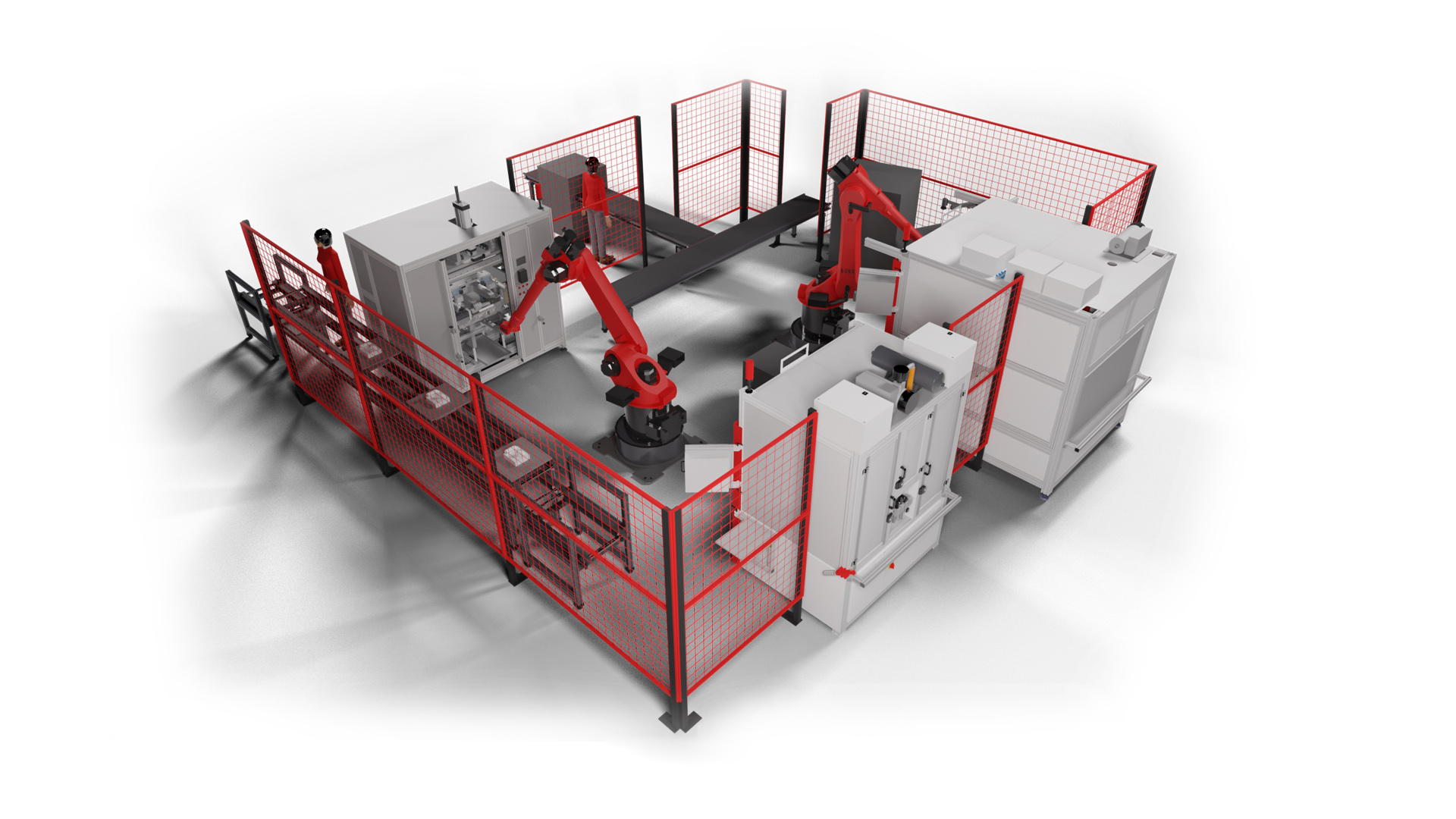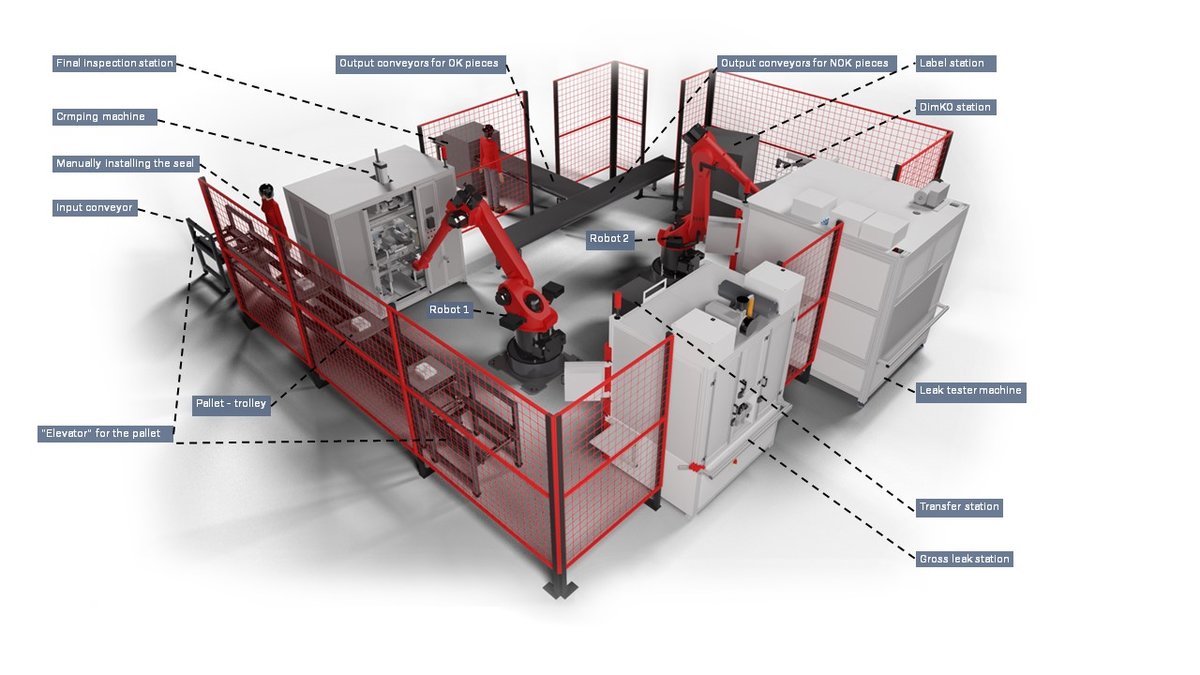Cooler assembly robotic cell

Design of a comprehensive, space-saving assembly and inspection workplace with high versatility

STUDY OF THE COOLER ASSEMBLY ROBOTIC CELL
Parts of the cooler assembly line:

DESCRIPTION OF THE STATION
1. Input conveyor – It consists of two conveyors on top of each other. Both conveyors have the same length. The conveyor has a camera to check the orientation of the core of the cooler. At each end of the conveyor line there is an “elevator” for the pallet.
2. Assembly location for the operator manually installing the seal – The station where the operator puts the seal in the core of the cooler.
3. Gross leak station – machine for detecting large leaks – This station is used to detect large leaks in the core of an individual cooler. The station has 2 chambers and includes a rear service door. The station has interchangeable tools that are connected to the machine using Harting connectors. The test itself is performed using the Innomatec LTC 702 AM unit. The station contains a bar code reader for detecting exchangeable tools.
4. Output conveyors for OK pieces and NOK pieces – The NOK conveyor is 3.5 meters long and within the reach of both robots. The OK conveyor is 4 m long and can be reached only by robot 2.
5. Leak tester machine – Machine for measuring tightness with the three chambers – This station is used to detect leaks after the cooler is assembled. The station has interchangeable tools that are connected to the machine using Harting connectors. The station uses two types of leak testing (vacuum and pressure difference). It can also be used for coolers that have two circuits.
6. Label station – Label gluing station. This station takes the label from the printer and affixes it to the cooler.
7. DimKo station – The station where the dimensions of the cooler are checked using a caliper.
8. Final inspection station – This station comes after the manual assembly of covers by the operator. The presence of the covers is checked at this station, as well as the barcode using a Keyence reader.
9. Crimping machine – Machine with 2 conveyors for crimping caps. Both conveyors are the same length. The conveyors have cameras to detect the correct orientation of the caps.
– The machine contains suction cups for handling the caps.
Key benefits of our solution:
- High dependability
- Assembly and inspection in one production cycle
- Minimizes scrap
- Big manpower savings



